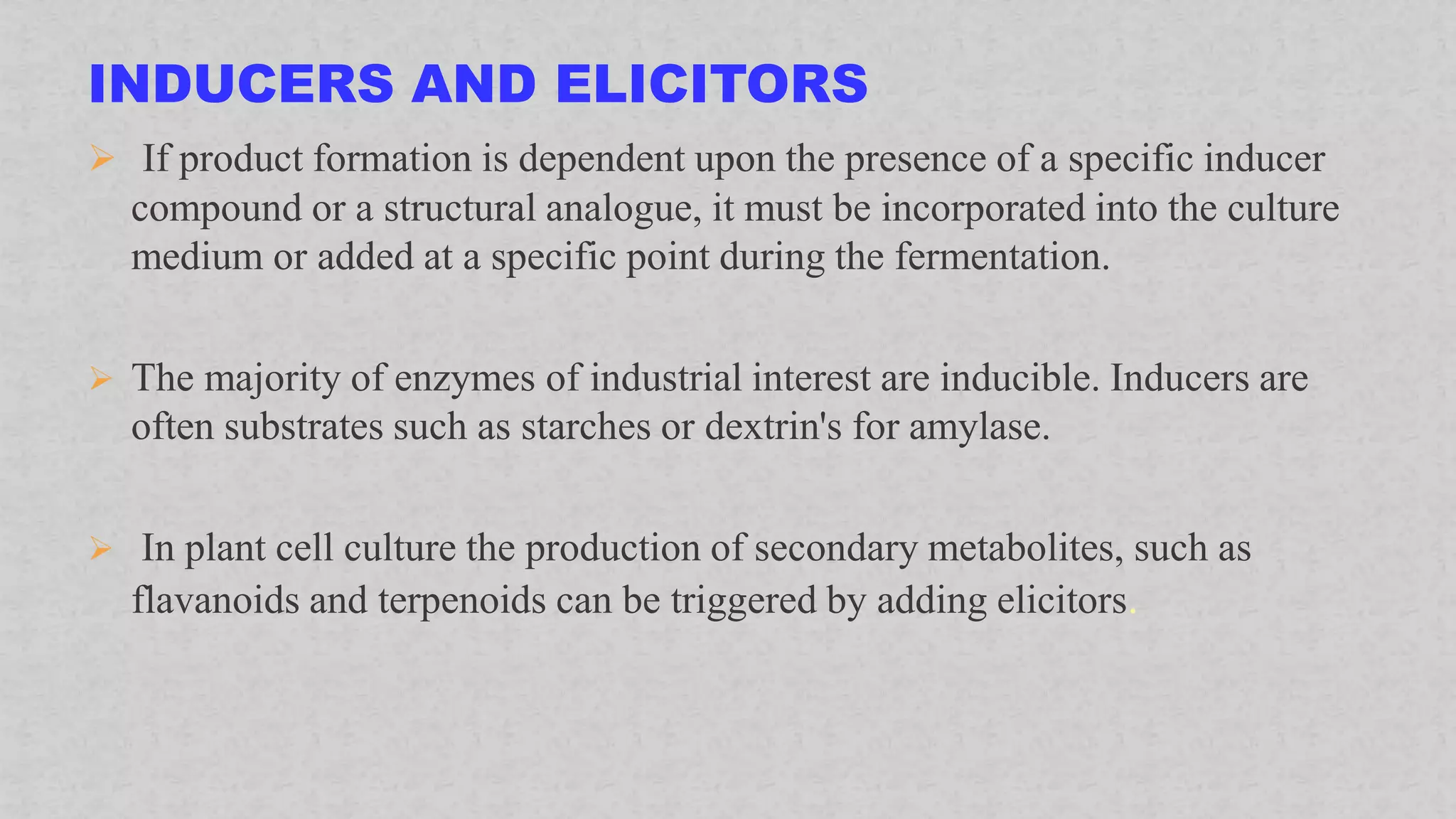The document discusses the formulation of growth media for microorganisms used in industrial fermentation processes, emphasizing the importance of suitable nutrient sources such as carbohydrates, nitrogen, vitamins, and minerals. It highlights the characteristics and types of media, such as synthetic and crude, and the economic considerations of using waste materials and by-products. Additionally, it outlines various components and additives necessary for optimizing fermentation, including antifoams, inducers, and chelators.
































